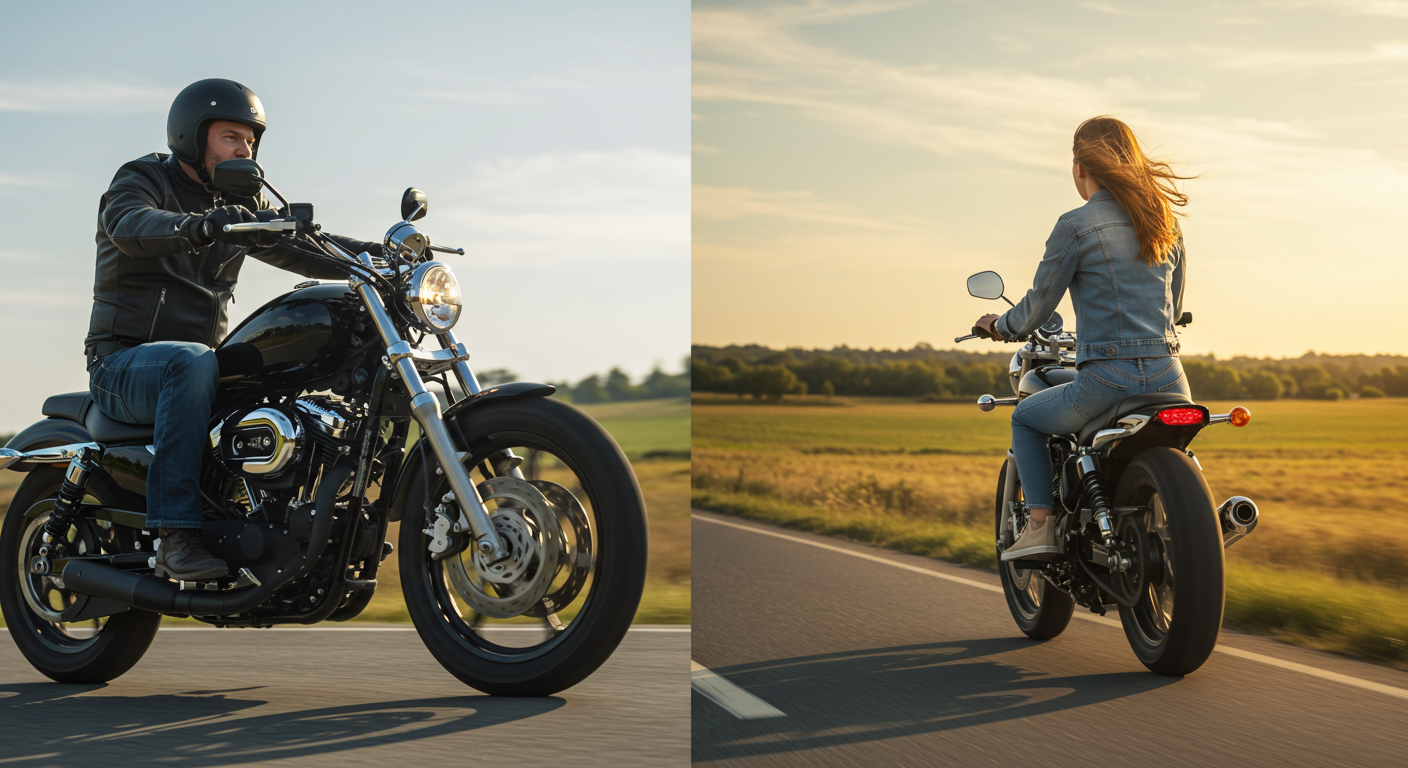Introduction: The Hidden Danger We All Underestimate
We’ve all been there—your boss snapped at you, your partner didn’t return your call, or someone cut you off in traffic. Your helmet goes on, your engine roars, and you hit the throttle like it owes you something. But here’s the truth: riding angry is one of the most overlooked dangers on the road. It’s invisible, internal, and deadly.This article is a raw, honest dive into why riding with anger compromises your safety, decision-making, and even your bike’s lifespan—and how to manage emotions for better, safer riding.

The Psychology of Riding Angry
What Happens in Your Brain
When you’re angry, your brain releases adrenaline and cortisol. These chemicals make your heart race, narrow your focus, and dull your ability to assess risk logically.
On a motorcycle, that’s a recipe for disaster.
- Tunnel Vision: You stop noticing hazards.
- Aggression: You tailgate, weave, or speed without awareness.
- Reduced Reaction Time: You react emotionally instead of strategically.
A calm rider anticipates. An angry rider retaliates.
Real Story: When Anger Took the Handlebars
Jason, a 32-year-old cafe racer owner, had a fight with his ex and decided to clear his head with a ride.
Ten minutes in, a van pulled out too slow. Jason accelerated hard, swerved into the next lane—and barely missed a family SUV. He didn’t calm down until he reached a gas station and noticed his hands were shaking.
Jason still rides—but never when he’s emotionally charged. He learned the hard way that **riding angry** isn’t therapy—it’s Russian roulette.
Why Riders Use Their Bikes to Cope
For many, the bike is freedom. Peace. Escape.
But here’s the trap: motorcycles are sensory machines. They amplify everything—speed, sound, tension, emotion.
When you ride angry:
- You’re not focused on the road.
- You’re disconnected from your machine.
- You ignore your safety instincts.
It feels like control, but it’s chaos in disguise.
The Risks of Riding Angry
1. Impaired Decision-Making
Your prefrontal cortex—the part of the brain that weighs consequences—is shut down when you’re emotionally reactive.
2. Aggressive Riding Behavior
Tailgating, speeding, reckless overtakes. All of which increase the odds of accidents.
3. Fatigue and Burnout
Anger burns more energy. You get tired faster, and fatigue leads to poor riding posture and response time.
4. Mechanical Neglect
You’re less likely to do a pre-ride check or respond to small mechanical cues from your bike when you’re emotionally distracted.
How to Know If You’re Riding Angry
Sometimes it sneaks up on you. Before you even realize, you’re gripping the bars too tight and ignoring red flags. Ask yourself:
- Am I breathing shallowly?
- Do I feel tense in my shoulders?
- Am I overreacting to minor inconveniences?
- Am I riding to prove a point?
If the answer is yes, it’s time to pause.
What to Do Instead: Emotional First Aid for Riders
1. Breathe Before You Ride
Take 3 deep breaths before you start the engine. Ground yourself.
2. Listen to Music or Ride with a Calm Playlist
Calm melodies help rewire your emotional tone.
3. Take the Scenic Route
Avoid highways or high-pressure riding environments. Let yourself enjoy the ride.
4. Know When to Walk Away
There’s no shame in skipping a ride. Sometimes, staying off the bike is the most mature decision.
5. Pull Over
If you feel emotions rising mid-ride, pull over. Sip water. Stretch. Recenter.
Building Mental Resilience as a Rider
Being a biker isn’t just about mastering corners and gear shifts. It’s about emotional maturity. The best riders:
- Know when not to ride.
- Don’t let pride override safety.
- Are aware of how their mental state impacts their riding.
At GHC Sportswear, we believe the strongest riders are the calmest ones.
How Gear Can Reflect—and Affect—Mindset
When you’re suited up properly, you’re more likely to take riding seriously. Wearing high-performance gloves, protective jackets, and padded pants signals to your brain: “This isn’t a joyride—it’s a commitment.”
Our GHC range is built not just for protection, but for mental preparation. When you zip up Kevlar, you’re strapping in to focus.
Riding Clubs and Anger Culture
Some riding circles romanticise rage: revving at red lights, shouting at drivers, “proving a point” on the highway. It’s not cool. It’s not safe. And it’s not sustainable. True riders elevate the culture.
- They stay calm under pressure.
- They support newer riders.
- They lead by example.
Be that rider.
Reflection: What Are You Really Escaping?
Ask yourself: what are you running from when you hop on angry?
- A hard day?
- A broken relationship?
- A sense of failure?
Riding can be healing. But only when it’s intentional—not impulsive. Take time to feel. Then take time to ride.
The Long-Term Consequences
Riders who constantly use bikes to express anger often experience:
- More accidents
- Shorter riding careers
- Burnout and mental fatigue
You don’t want your love for riding to turn into resentment or trauma. Protect your passion by protecting your peace.
Final Thoughts: Ride With Heart, Not Heat
Every twist of the throttle should be a conscious choice, not an emotional outburst. If you’ve been guilty of riding angry—welcome to the club. We all have. But the goal is to grow. To choose peace. To ride with focus, not fury. Let your journey be bold. Let your spirit be free. But let your emotions stay grounded.
